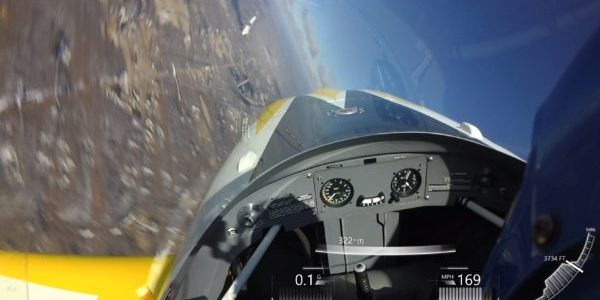I have been a flight instructor since 2007. Taught by a 141 flight school collegiate system which is frankly one of the best in the country. No, it wasn’t Embry-Riddle, but I did have the opportunity to compete against them… but that’s for another time. Throughout my training there I never felt unsafe. I certainly felt confident and at times cocky, but what type-A personality doesn’t. I had the confidence of a kid who’s family always had a computer and used it to play flight sims from as early as I can remember. In those sims I bent a lot of metal, but I also learned how to make an airplane do what I wanted it to do, as well as where the edges of performance were. I knew the “what” of performance, but I lacked the “how”. Specifically, I didn’t understand how airplanes turn.
I don’t want this next part to be taken the wrong way, but I was a very typical pilot in an atypical situation. I had a great mentor who always challenged me to think like a 4 year old. What do 4 year olds do? They ask, almost incessantly… “Why?” Through asking why, I learned that a lot of the things that I thought were true, simply weren’t. So then I got curious to see if other pilots I met had the same incorrect info and I began with a simple quiz.
Out of the 3 control surfaces on the airplane, which is responsible for “Turn”? Turn being defined as a change in heading. You’re probably already thinking of it, as were 85% of the pilots I polled over the years. Everyone from student pilots to CFI’s, Airline pilots and Test pilots, and even those “crazy” aerobatic pilots (guilty).
“Ailerons!” They would exclaim. “Welcome to the 85% who get this wrong on the first go” I would say to a look of bewilderment. I can only imagine you’re staring at this page having re-read my statement and even contemplating clicking the X to close the window, maybe even unsubscribing, but give me a minute if you will. Think about the position of the stick/yoke when doing a Steep Turn to the left. Initially to roll into the bank angle, you displace the ailerons, but once you’ve established the bank angle you’ve now placed the ailerons to neutral or maybe even a bit opposite to compensate for overbanking tendency. If they’re opposite the direction of the turn, how can they be controlling it? Ok, try again, only 2 control surfaces left.
“Rudder?” spoken with all the shattered confidence they can muster. “Welcome to the 65% who guessed wron…” They’re not even paying attention at this point. Thoughts of “How can it be?” “It can’t be the Elevator can it?” “What is this witchcraft?” Slowly the words I’m saying come back to them through the buzzing going on in their heads. “… when you were a student pilot, did you know how to use your feet?”
“No.” They reply a bit shyly.
“But did you turn the airplane around? You must have since landed back at the original airport about an hour later and didn’t circumnavigate the globe.” They nod in agreement still trying to wrap their head around this new reality.
“But I can’t turn around using elevator alone!” I like to shyly smile as I pick up my model airplane to gracefully demonstrate a half-loop up. With the aircraft now facing a 180 degree different heading, I watch the realization wash over their face.
What I couldn’t verbalize over the years was that the horizontal component of lift turns an airplane. The elevator is responsible for lift and therefore the horizontal component as well. If you think back to that steep turn with the neutral aileron, you should recall that while you’re rolling into the bank, you begin pulling back on the pitch controller. In competition aerobatics, our steep turns are required to be performed at greater than 60 degrees of bank with no heading change occurring during the roll into or out of the turn. This increased bank angle requires even more lift to sustain level flight, thereby acting as a magnifying glass for the required elevators affect on turn, and really bringing on the G-Force!
Now G-Force and Bank Angle is a different topic for a different time, but what I’d like to leave you with is my favorite video of a Pitts S-1 rolling to the Right with Right Aileron… but keep watching to learn which way it turns.

